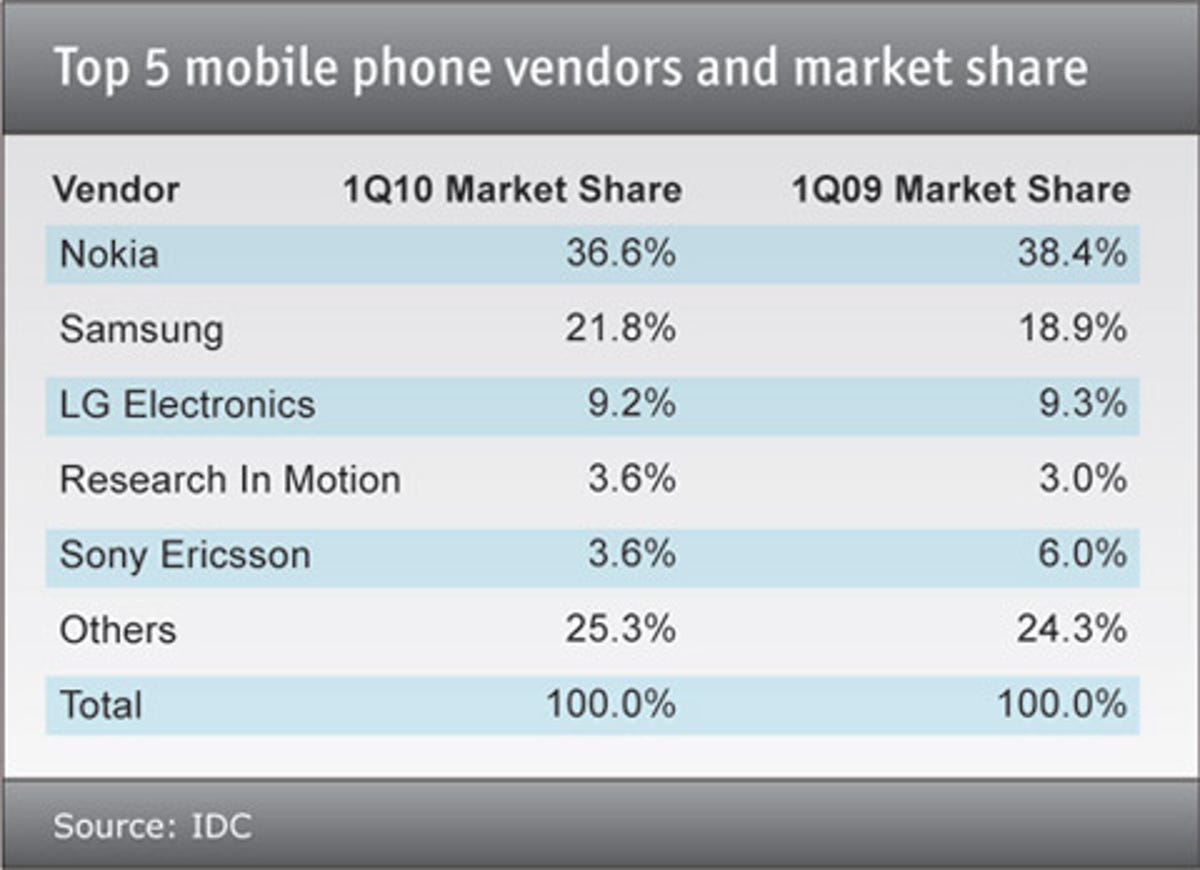Smartphones drove a rebound in the overall mobile handset market in the first quarter of 2010, as BlackBerry maker Research In Motion broke into the top five of cell phone makers for the first time.
The worldwide mobile phone market grew 21.7 percent in the first quarter of 2010, compared to a decline of 16.6 percent during the first quarter of 2009 when the global economy was in recession, according to market research firm IDC. Growth was fueled mainly by the economic recovery and sales of smartphones, IDC said. In total, cell phone makers shipped 294.9 million units in the first quarter of 2010 compared to 242.4 million units in the first quarter of 2009.
Smartphones, which allow people to e-mail, surf the Web, and access other Internet-based applications, have grown in popularity over the past year. The growing demand also helped catapult RIM, the largest maker of smartphones, into the top five of worldwide mobile handset makers. The company displaced Motorola, which has struggled over the past few years to find another hit phone to replace its popular flip-style Razr. Motorola has steadily been slipping in market share.
Despite its better than expected first quarter earnings reported Thursday, Motorola is still struggling to sell phones. That said, its strategy to focus on smartphones is starting to pay off. And the company beat expectations in smartphone sales for the first quarter. Executives expect the momentum to continue as it introduces 20 new devices this year using Google’s Android operating system.
RIM tied with Sony Ericsson for the No. 4 position in IDC’s market share rankings with 10.6 million units shipped in the first quarter. Motorola, which had been in the top five since IDC started tracking quarterly market share in 2004, shipped 8.5 million units.
“The entrance of RIM into the top five underscores the sustained smartphone growth trend that is driving the global mobile phone market recovery,” Kevin Restivo, senior research analyst with IDC said in a statement. “This is also the first time a vendor has dropped out of the top five since the second quarter of 2005, when Sony Ericsson grabbed the No. 5 spot from BenQ Siemens.”

So how did the rest of the mobile phone makers do in the first quarter? Nokia maintained its No. 1 position shipping 107.8 million phones in the first quarter. But the company still managed to lose market share, slipping from 38.4 percent market share in the first quarter of 2009 to 36 percent market share in the first quarter of 2010.
Samsung held the No. 2 spot for the 12th consecutive quarter with total shipments of 64.3 million devices. Its market share grew from 18.9 percent in the first quarter of 2009 to 21.8 percent in the first quarter of 2010.
LG Electronics held onto its third place position. It’s year-over-year shipments grew 20 percent, but the company’s market share remained relatively flat at 9.3 percent.
Research In Motion and Sony Ericsson tied for fourth place each with 3.6 percent market share. While RIM increased its market share compared to the previous year, Sony Ericsson lost ground. In the first quarter of 2009, Sony Ericsson had a market share of 6 percent.
IDC analysts said the positive trends in the mobile handset market are expected to continue throughout 2010, but they warn that growth won’t be as strong throughout the year mainly because the first quarter of 2009 was so bad. The firm is forecasting growth of the worldwide market to be about 11 percent overall in 2010.
“It should be noted that the market’s first-quarter growth, while impressive, is relative to one of the worst quarters in mobile phone industry history (first quarter of 2009),” Restivo said. “The market’s growth should not be taken as a proxy for future quarters nor annual growth.”



